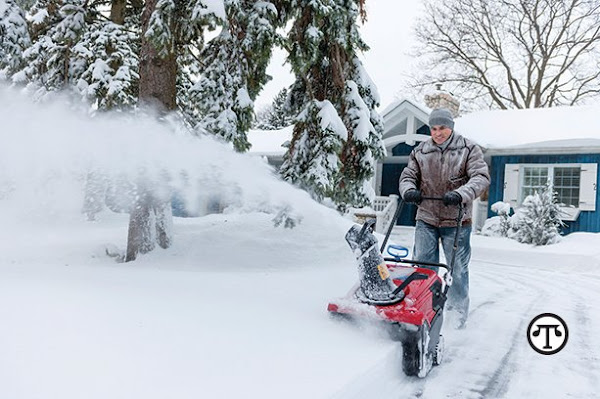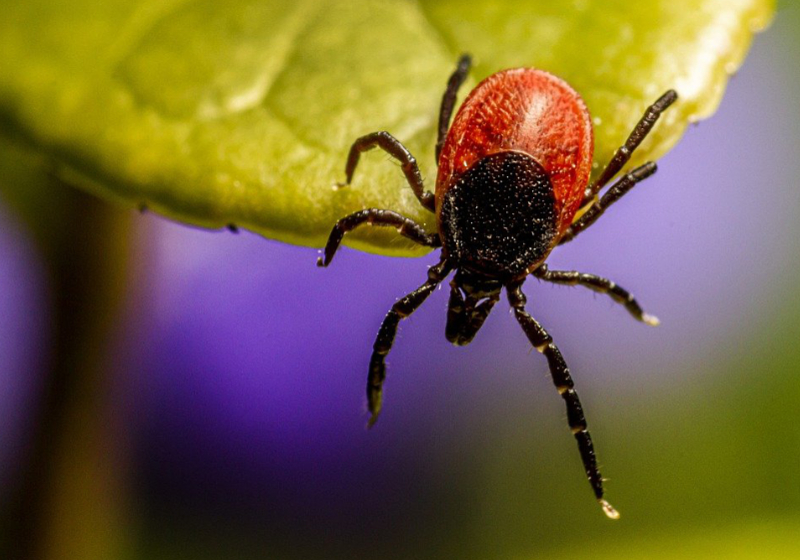
How to choose the best summer camp for your kids

Hidden issues to check before starting home renovations

(SNS) - Home renovations can be exciting, promising a fresh new look and improved functionality for your living space. However, beneath the surface, hidden problems can quickly turn a straightforward project into a costly and stressful experience. Identifying these potential issues before starting a home renovation can save both time and money while ensuring a smoother renovation process. Understanding what to check before beginning will help prevent unwelcome surprises along the way.


Stay off the tracks: Pedestrian-railway accidents soar 35% in the past five years

 by Mark Richardson
by Mark RichardsonIllinois News Connection
There has been a 35% increase nationwide in the number of trespassing collisions on railroads.
Data from Operation Lifesaver showed overall, the incidents are much less common than they used to be but the number in Illinois is growing.
Buck Russel, manager of public safety for Union Pacific Railroad, said since 2018, there has been a 35% increase nationwide in the number of trespassing collisions on railroads. He explained railroads are private property, so people on the tracks are considered trespassers, not pedestrians.
"It's not a place to take wedding pictures, graduation pictures, record albums," Russel stressed. "They have that nostalgia feeling, the train tracks; you know, they continue on forever into the sunset. But when you get on the train tracks, you're exhibiting those bad behaviors that our little ones are going to pick up on."
Interstate Commerce Commission statistics for 2021 indicate Illinois had 124 collisions between trains and motor vehicles or pedestrians at highway-rail crossings. Twenty-one people were killed and another 30 seriously injured. The state ranks fifth for trespassing casualties.
Illinois has more than 7,300 miles of track, with 7,500 public and almost 4,000 private rail crossings. Russel noted a recent report by the Safe Kids Worldwide campaign found a majority of parents do not realize the importance of addressing railroad safety, despite the statistics. Whether it is a railroad crossing or a collision on the tracks, he said nearly all incidents are preventable.
"Approximately every three hours, either a person or a vehicle is struck in the United States," Russel pointed out. "I know personally, when I pass it on to my family members, they're just like, 'There is just no way it can be every three hours.' And it, unfortunately, really does come down to that."
Russel said most of the collision incidents take place between 8 a.m. and 4 p.m. Last month, the Biden administration announced it has allocated more than more than $1.4 billion to improve railway safety.
Other interesting articles:




CUPHD offers low-cost radon tests, limited supply available
 CHAMPAIGN - Radon, a naturally occurring radioactive gas released into the air from decaying matter in rocks, soil and water, in outdoor air are relatively harmless, radon can accumulate to dangerous levels inside buildings. It cannot be detected by sight, smell or taste by humans. Over time, the radioactive particles from the gas have been shown to increase the risk of lung cancer, especially in non-smokers.
January is National Radon Action Month, and the Champaign-Urbana Public Health District (CUPHD) is encouraging residents to learn more about radon gas and have their homes tested regularly.
CUPHD has home radon test kits, which are reliable and easy to use, for just $7.00, which can be picked up at in Environmental Health Division at 201 W. Kenyon Road in Champaign, Monday through Friday, 8:00 a.m. to 4:00 p.m. Buyers can also get a free t-shirt is also available with their purchase until they are gone.
For more information on radon and home radon test kits, contact CUPHD at (217) 373-7900 or visit www.c-uphd.org/radon.
CHAMPAIGN - Radon, a naturally occurring radioactive gas released into the air from decaying matter in rocks, soil and water, in outdoor air are relatively harmless, radon can accumulate to dangerous levels inside buildings. It cannot be detected by sight, smell or taste by humans. Over time, the radioactive particles from the gas have been shown to increase the risk of lung cancer, especially in non-smokers.
January is National Radon Action Month, and the Champaign-Urbana Public Health District (CUPHD) is encouraging residents to learn more about radon gas and have their homes tested regularly.
CUPHD has home radon test kits, which are reliable and easy to use, for just $7.00, which can be picked up at in Environmental Health Division at 201 W. Kenyon Road in Champaign, Monday through Friday, 8:00 a.m. to 4:00 p.m. Buyers can also get a free t-shirt is also available with their purchase until they are gone.
For more information on radon and home radon test kits, contact CUPHD at (217) 373-7900 or visit www.c-uphd.org/radon.
Are you itching to get out and run the snow thrower?

5 ways to celebrate with the holidays and keep your family pet safe

New invention may reduce need for mask in classrooms

Healthcare workers around the country sound alarm on rising violence on the job
The San Leandro Hospital emergency department, where nurse Mawata Kamara works, went into lockdown recently when a visitor, agitated about being barred from seeing a patient due to covid-19 restrictions, threatened to bring a gun to the California facility.
It wasn’t the first time the department faced a gun threat during the pandemic. Earlier in the year, a psychiatric patient well known at the department became increasingly violent, spewing racial slurs, spitting toward staffers and lobbing punches before eventually threatening to shoot Kamara in the face.
"Violence has always been a problem," Kamara said. "This pandemic really just added a magnifying glass."
In the earliest days of the pandemic, nightly celebrations lauded the bravery of front-line health care workers. Eighteen months later, those same workers say they are experiencing an alarming rise in violence in their workplaces.
A nurse testified before a Georgia Senate study committee in September that she was attacked by a patient so severely last spring she landed in the ER of her own hospital.
At Research Medical Center in Kansas City, Missouri, security was called to the covid unit, said nurse Jenn Caldwell, when a visitor aggressively yelled at the nursing staff about the condition of his wife, who was a patient.
In Missouri, a tripling of physical assaults against nurses prompted Cox Medical Center Branson to issue panic buttons that can be worn on employees’ identification badges.
Hospital executives were already attuned to workplace violence before the pandemic struck. But stresses from covid have exacerbated the problem, they say, prompting increased security, de-escalation training and pleas for civility. And while many hospitals work to address the issue on their own, nurses and other workers are pushing federal legislation to create enforceable standards nationwide.
Paul Sarnese, an executive at Virtua Health in New Jersey and president of the International Association for Healthcare Security and Safety, said many studies show health care workers are much more likely to be victims of aggravated assault than workers in any other industry.
Federal data shows health care workers faced 73% of all nonfatal injuries from workplace violence in the U.S. in 2018. It’s too early to have comprehensive stats from the pandemic.

Even so, Michelle Wallace, chief nursing officer at Grady Health System in Georgia, said the violence is likely even higher because many victims of patient assaults don’t report them.
"We say, ‘This is part of our job,’" said Wallace, who advocates for more reporting.
Caldwell said she had been a nurse for less than three months the first time she was assaulted at work — a patient spit at her. In the four years since, she estimated, she hasn’t gone more than three months without being verbally or physically assaulted.
"I wouldn’t say that it’s expected, but it is accepted," Caldwell said. "We have a lot of people with mental health issues that come through our doors."
Jackie Gatz, vice president of safety and preparedness for the Missouri Hospital Association, said a lack of behavioral health resources can spur violence as patients seek treatment for mental health issues and substance use disorders in ERs. Life can also spill inside to the hospital, with violent episodes that began outside continuing inside or the presence of law enforcement officers escalating tensions.
A February 2021 report from National Nurses United — a union in which both Kamara and Caldwell are representatives — offers another possible factor: staffing levels that don’t allow workers sufficient time to recognize and de-escalate possibly volatile situations.
Covid unit nurses also have shouldered extra responsibilities during the pandemic. Duties such as feeding patients, drawing blood and cleaning rooms would typically be conducted by other hospital staffers, but nurses have pitched in on those jobs to minimize the number of workers visiting the negative-pressure rooms where covid patients are treated. While the workload has increased, the number of patients each nurse oversees is unchanged, leaving little time to hear the concerns of visitors scared for the well-being of their loved ones — like the man who aggressively yelled at the nurses in Caldwell’s unit.
In September, 31% of hospital nurses surveyed by that union said they had faced workplace violence, up from 22% in March.
Dr. Bryce Gartland, hospital group president of Atlanta-based Emory Healthcare, said violence has escalated as the pandemic has worn on, particularly during the latest wave of infections, hospitalization and deaths.
'Front-line health care workers and first responders have been on the battlefield for 18 months," Garland said. "They’re exhausted."
Like the increase in violence on airplanes, at sports arenas and school board meetings, the rising tensions inside hospitals could be a reflection of the mounting tensions outside them.
William Mahoney, president of Cox Medical Center Branson, said national political anger is acted out locally, especially when staffers ask people who come into the hospital to put on a mask.
Caldwell, the nurse in Kansas City, said the physical nature of covid infections can contribute to an increase in violence. Patients in the covid unit often have dangerously low oxygen levels.
"People have different political views — they’re either CNN or Fox News — and they start yelling at you, screaming at you," Mahoney said.
"When that happens, they become confused and also extremely combative," Caldwell said.
Sarnese said the pandemic has given hospitals an opportunity to revisit their safety protocols. Limiting entry points to enable covid screening, for example, allows hospitals to funnel visitors past security cameras.
Research Medical Center recently hired additional security officers and provided de-escalation training to supplement its video surveillance, spokesperson Christine Hamele said.
In Branson, Mahoney’s hospital has bolstered its security staff, mounted cameras around the facility, brought in dogs ("people don’t really want to swing at you when there’s a German shepherd sitting there") and conducted de-escalation training — in addition to the panic buttons.
Some of those efforts pre-date the pandemic but the covid crisis has added urgency in an industry already struggling to recruit employees and maintain adequate staffing levels. "The No. 1 question we started getting asked is, ‘Are you going to keep me safe?’" Mahoney said.
While several states, including California, have rules to address violence in hospitals, National Nurses United is calling for the U.S. Senate to pass the Workplace Violence Prevention for Health Care and Social Service Workers Act that would require hospitals to adopt plans to prevent violence.
"With any standard, at the end of the day you need that to be enforced," said the union’s industrial hygienist, Rocelyn de Leon-Minch.
Nurses in states with laws on the books still face violence, but they have an enforceable standard they can point to when asking for that violence to be addressed. De Leon-Minch said the federal bill, which passed the House in April, aims to extend that protection to health care workers nationwide.
Destiny, the nurse who testified in Georgia using only her first name, is pressing charges against the patient who attacked her. The state Senate committee is now eyeing legislation for next year.
Kamara said the recent violence helped lead her hospital to provide de-escalation training, although she was dissatisfied with it. San Leandro Hospital spokesperson Victoria Balladares said the hospital had not experienced an increase in workplace violence during the pandemic.
For health care workers such as Kamara, all this antagonism toward them is a far cry from the early days of the pandemic when hospital workers were widely hailed as heroes.
"I don’t want to be a hero,” Kamara said. “I want to be a mom and a nurse. I want to be considered a person who chose a career that they love, and they deserve to go to work and do it in peace. And not feel like they’re going to get harmed."
Commentary: The whole world leads a life of uncertainty
When I am asked why is it that I like my routine so much, the answer is always the same. 'Well, I do, because there is a relative safety in it'. I am both the scriptwriter and the leading actor and this is my morality play’. Naturally, there are things beyond my competence which I can neither comprehend nor eschew. Nevertheless, I am grateful because every night I go to bed, I retain the faith, somehow, I enjoy the confidence that the next morning the sun and the moon will still be in their places, an asteroid impact will be avoided, an alien will not land on my doorstep. Yet, it is mathematically certain that at one point we are all going to be faced with some unpalatable prospects. Does this mean that it works to our benefit if things indefinitely remain the same? Literally, this is impossible. Heraclitus, the ancient Greek philosopher believed that change was central to the universe. 'Everything flows, nothing stays still.' Personally, I like change. To be honest, I often pursue it as it makes me feel alive, it makes me feel powerful. There have been many times in the past that I took key decisions that resulted in me turning my whole life upside down. The reason was simple; I could do so, because I chose to do so. Therefore, I, a negligible yet complex molecule in the vastness of the universe, can alter my fate, can be master of my own destiny and have the power to dream and plan. So, allow me to summarize. I have a life, I go through my familiar routine which I adore because it grants me the right to move freely in my sphere of safety and at the same time, I assume full authority to intervene in it whenever I want or need. FULL STOP! But what happens when my fate is predetermined and placed in the hands of other forces? Is this always the case and I just deceive myself by having the misconception that I pull the strings? Do I pull my own strings or does a puppeteer manipulate me? And if this is the case, what might happen if the puppeteer decides to go up the stage and start improvising? Does this mean that if he fancies, he can grab and toss me in the air, or squeeze me and do whatever he wants with me? My fate is then going to be decided in the last minute and I, the poor puppet, face contorted in agony, will have to go up the stage, forever unaware of the outcome of the play. At that point, I am nothing. Everything I was taught about who I can be or how my decisions affect me and the others, all these are proven ultimately futile. Why? Because now, I do not know the script! I am not the leading actor; not even an extra. Ergo, worse to being controlled, is not having a clue about what will happen next. Assuming that the puppeteer exists, bound I am not to provoke his wrath. This leaves me with no other option but to hate him. My friends, it is the year 2020 and now the whole world leads a life of uncertainty. Fear of what is happening has been surpassed by fear of what the future has in store. The consequences of the unknown loom large in this ancient Greek play which can only be described as DRAMA.
Work on I-74 could affect travel to CU
With IDOT expecting the work to last around seven weeks from start to completion and students returning to the University campus later this month, Sentinel area drivers may want to plan alternative routes on trips into CU to avoid congestion in the construction area starting near High Cross Road just east of Cunningham Avenue in Urbana heading west to Prospect Avenue in Champaign.
Nighttime lane closures will be in effect from 8 pm to 6 am Sunday through Thursday, with at least one lane open in each direction at all times.
IDOT urges drivers to pay close attention to signs in the work zones and obey the posted speed limits to avoid accidents. Motorists should be be on high alert for rapidly changing traffic flow.
Last week, on August 1 near a construction zone on westbound Interstate 74 between Fithian and Oakwood, a semi driver was lost his life while another motorist was hospitalized with life-threatening injuries in two separate accidents. Ronald C. Schaer of Danville, who was hospitalized life-threatening injuries, was ticketed for failure to reduce speed to avoid an accident.
Drivers are asked not use mobile devices and be prepared to avoid workers and construction equipment.
More Sentinel Stories



Photo Galleries






